I visited Donbass and other operational zones upon invitation from the Russian Ministry of Defence, from April 29th until May 1st. I had the chance to meet with both Russian and the local officials in the cities of Mariupol, Donetsk, Berdiansk, Enerhodar and Melitopol respectively, and had the opportunity to have conversations with ordinary people.
I have learned about many issues, from the current state of the military operation to the problems experienced by the locals. As someone who has closely followed, read, written and attended meetings on Ukrainian crisis and the Donbass issue, I would like to remind that seeing events on the spot is always different from learning about them in other ways.
The only participant from Turkey
On the night of April 28, we meet in Rostov, a city on the banks of the Don River, on the night of April 28th, to cross into the Donbass Region. The officials from the Defense Ministry explain the purpose of this invitation as follows: “There has been a lot of coverage in the Western media regarding the Russian operation and the Ukrainian crisis. And we wanted you to see the region with your own eyes, talk to the authorities and the common people as you wish, and ask them any questions you want, record anything you wish. Then, compare what you have seen and what you heard from the West.”
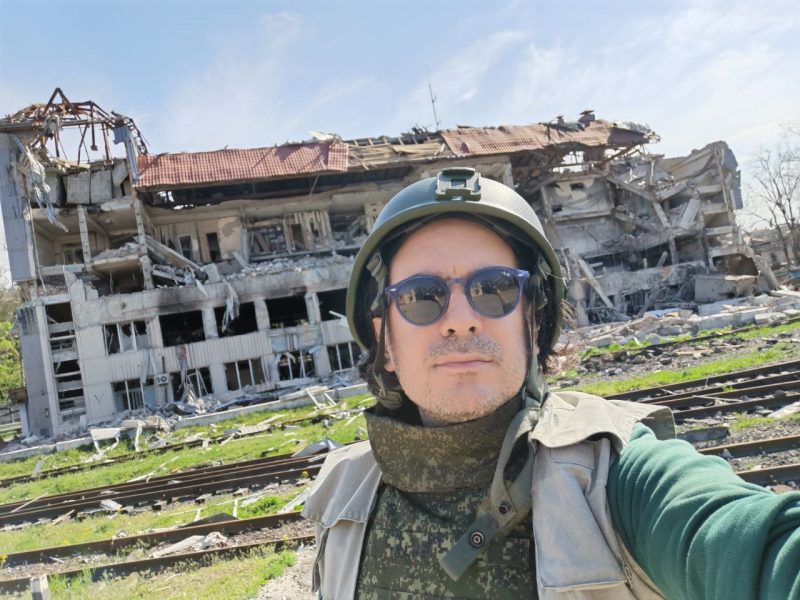
The delegation also included press members from countries such as France, Iceland, Germany, India and various Arab countries. Unfortunately there are no other participants from Turkey other than me.
Kiev has targeted journalists and intellectuals
We arrive at the border shortly after leaving Rostov. On the other side of the border, the Russian Colonel A. greets us by saying “Welcome to the Donetsk People’s Republic!” The Russian Ministry of Defense kept the tour program confidential and we were informed about the destinations only when we arrived. Some of the areas that are covered by this trip and the roads we crossed are very close to the Ukrainian military posts.
Colonel A. says that Kiev administration blames the journalists and intellectuals who participated in this trip. Therefore, they expect all kinds of provocations from the Ukrainian side. Then Colonel A. lets the commander of one of the most elite units of the Russian Special Forces, who provided the security of the trip for three days, to speak. The team commander explains the security precautions:
If you hear a whistle…
“If we all want to get back home safely, we will follow these rules. When we get off the bus, our boys are going to form a circle that defines the boundaries you can walk within. And there is absolutely no way crossing out of that circle. Landmines laid by the Ukrainian troops cover the city. Second: If you hear a whistle approaching us from a far distance, you will do exactly what I tell you. When I say everyone to hit the ground, everyone will hit the ground it and cover his or her ears, and scream as loud as you can. There is absolutely no running inside the buildings, etc. The Ukrainians have laid landmines even inside the apartments. In any case, our boys will take you to a safe place. If you follow the rules carefully, nobody will get hurt.”
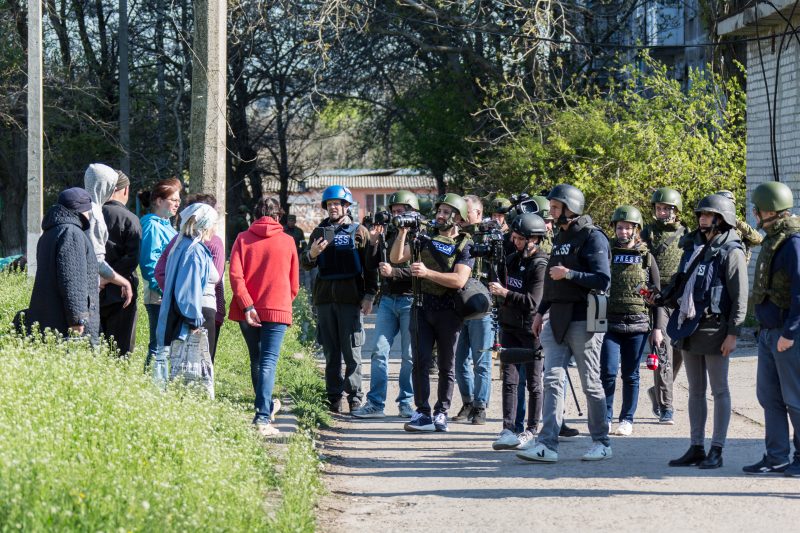
“My mom says I am special”
Then they handed over bulletproof vests and helmets. The team commander and his subordinate stayed in our vehicle until the end of the trip. They are fully equipped with special goggles, masks, headsets, camos and arms. They are well built. If we express it in street-slang; they all look super-cool. Sudden, I notice a tag on the back of one of the commander’s subordinate: “My mom says I am special”
Our first stop: Mariupol
It is the Colonel A., who has been traveling with us throughout the entire journey, explains the first stop we will take with the assistance of armored vehicles: Mariupol.
Mariupol is the largest city around the shores of the Azov Sea. It holds a strategic importance with its seaport, its large industry and geographical location. It is one of the locations where the most violent clashes have taken place since the beginning of the Russian operation.
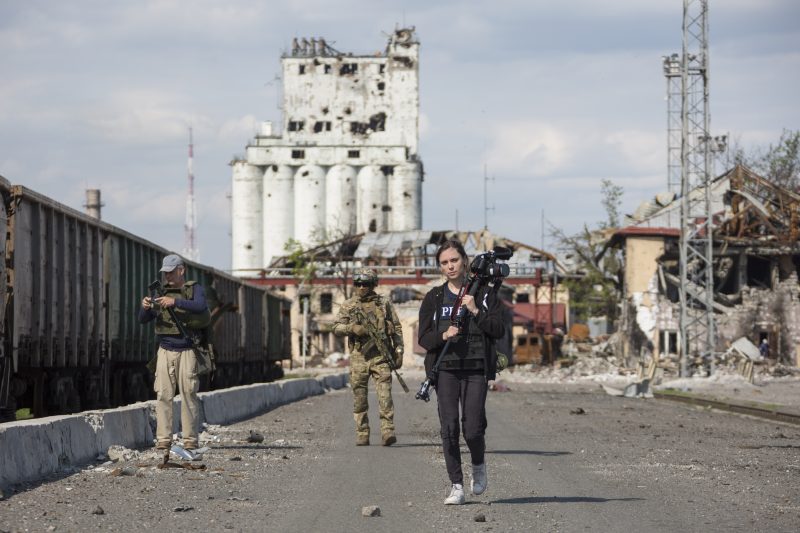
The Ukrainian spy who disguises as a woman
We keep moving. We see a long queue of people standing before we get further away from the border. We are told that applications to cross the Russian side were made there. They are undergoing a serious inspection. Criminals, Ukrainian spies or saboteurs are carefully being searched. There have also been several Ukrainian officials dressed up like woman trying to infiltrate by saying “all my documents are burned down”. The most important problem: Many people actually do not have any documents.
We keep moving with the Azov Sea on our left. If you travel along the sea on your left like that, you will reach Mariupol. Colonel A. says “Just like Kemer huh?” and laughs. Turns out that he has been to Kemer and Side regions in Antalya at least 10 times.
The Russian artillery shells Azovstal
At around 7:00 a.m. we stop by the road in the outskirts of the city, at around 7:00 a.m. We are told to wait for some time here, so I get off the bus. But we are still not allowed to step on the roadside grassy area. Landmines could be basically anywhere here. All of a sudden, we hear artillery fire. Then thick black smoke rises from the horizon. Russian artillery is hitting the Azovstal steel works.
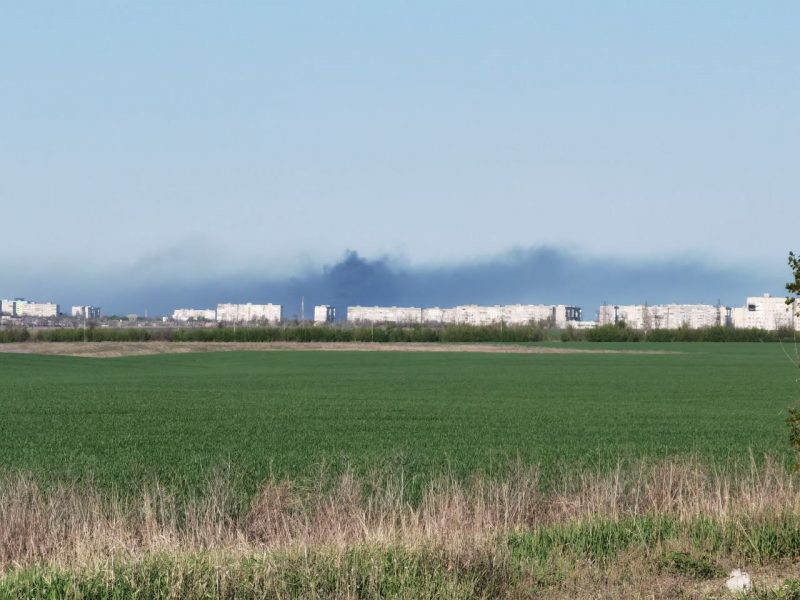
Civilian hostages inside
As the Ukrainian Armed Forces and the Azov Battalion lose more and more ground, they have retreated all the way back to the Azovstal steelworks, where they were eventually besieged. Of course they also brought many civilians with them either by deception or simply by force. It has been repeatedly covered that especially the Azov Battalion used the civilian population as human shields during the conflict. And they are implementing the same plan in Azovstal. Civilians are being held hostage in the steel mill. In fact, not a single civilian was allowed out, not even through humanitarian corridor for civilian evacuation during the three-day ceasefire.
400 Foreign fighters
Inside there are not only Ukrainian forces and civilians, but also a large number of foreign fighters. Some of them are high-ranking. Their “official” missions may have ended, but they are still carrying out some of their duties, still assigned by their governments. So far, they have identified, British, French, Belgian, Dutch and Polish military personnel. The intense interest in Azovstal from the West, actually stems mainly from that reason. There is also a rumour of a high-ranking Canadian general.
They have always wanted the humanitarian corridor to be opened towards the Ukrainian side in order to save these besieged foreign fighters, by hiding them from the public eye, but the Russian side kept refusing.
The Leader of the Donetsk People’s Republic Denis Pushilin also mentions about it and says that there are around 400 foreign fighters based on information they received from intelligence sources and the Ukrainian POWs, when we meet him in Mariupol. However, he also adds that he could not officially confirm the presence of foreign fighters but also could not deny it, adding “we will see when Azovstal is completely liberated.”
The bunker that goes 9 floors underground
Azovstal is a steel factory built during the Soviet era. A huge bunker was also built that goes nine floors underground, in case of nuclear war. Thousands of people can take shelter in that bunker. The Russian officials know that air dropped bombs will not seriously damage the bunkers. The offensive has also been paused to avoid harming the civilians. Putin also gave a direct order that “there will be no attack but not a single fly flies”. For now, they are content with air bombings and artillery barrage.
I ask, “Well, would not that hurt the civilians?”. They say they collect information through satellites, drones, and also from sources inside, and that they are also gathering intelligence from those who have escaped. The main purpose of these bombardments is to cause a psychological distress for those inside. They have left with only two weeks supply of water, food, and medicine. Azovstal is expected to surrender in two weeks at most. The only way out is to break the siege. And that does not seem likely either.
Each civilian is worth 66.6 kilograms of supplies
A new intel arrives as I am writing these lines. The Azov Battalion fighters at Azovstal, are offering to release 15 civilians from the steel mill, in exchange for 1000 kilograms of food and medicine. They are now trying to “sell” these civilians for 66.6 kg of supplies per hostage, that they used as human shields by deception.
This intel basically confirms that the supply stocks inside the steel mill, is starting to run out.
According to another claim, when the Ukrainian forces were under siege in Azovstal, they intentionally did not take the opportunity to leave the city. They planned to keep the Russians busy and waste their time holding civilians hostage in this highly fortified bunker. While the Azovstal front still going on, the Russians cannot completely close the Mariupol front and shift their power to the other regions.
The secret behind the white armbands
Finally, we take the buses that will take us to Mariupol. Meanwhile, soldiers from the Russian Special Forces wrap each other’s arms or legs with white duct tapes. Others wear a white armband band or simply tie a white piece of cloth on their arms.
I cannot help but ask myself, “Are they going to engage in combat or something?”. Because with the start of the Russian operation, most of the fighting took place in the cities, and the Russians wore white armbands while the Ukrainians were wearing blue, so that these parties do not confuse each other.
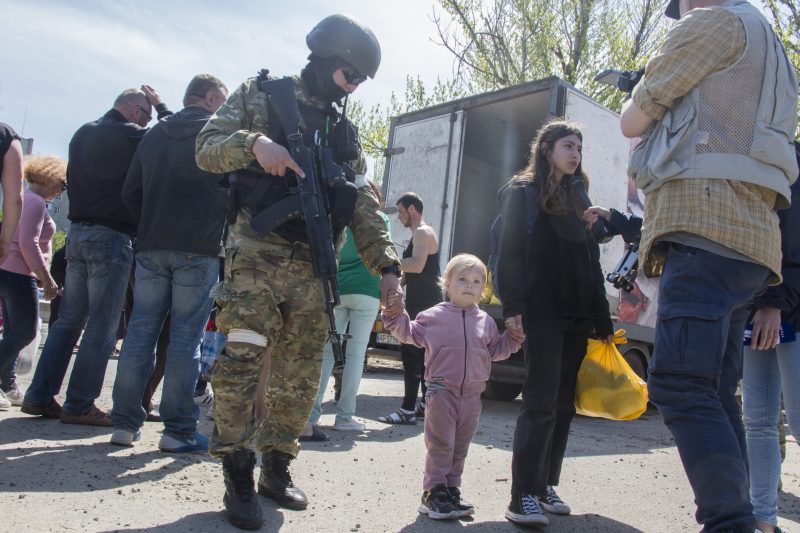
You may recall that in the case of Buçha, this armband issue was brought to discussion. The Russian officials denied the Ukrainian side’s allegations, showing the dead bodies lying on the ground were wearing white armbands.
That is why I thought a combat was imminent. But no, as we have seen throughout the rest of the trip, every single soldier have been wearing white, throughout the entire conflict zone, just in case.
What does the letters “Z” and “V” mean?
Apart from these white bandages, another symbol of the Russian side are the Latin letters of “Z” and “V”. You see these letters everywhere, from armoured vehicles to civilian vehicles, from soldiers’ backs and arms to the walls in the streets.
These letters initially appeared on armoured vehicles in the operation, but then was spread throughout all of Russia. It became a symbol of public support for this military operation. You could encounter it in the streets or all over the social media. But in the conflict zone, it has become a visual sight of everyday life.
At first, it was claimed that the tanks with these letters indicated the area they were assigned. However, the Ministry of Defense explained, in a statement, that the letter “Z” could stand for “for victory”(za pobedu), and the letter “V” could mean “strength is in truth” (sila v pravde) or “the task will be complete” (zadacha budet vypolnena).
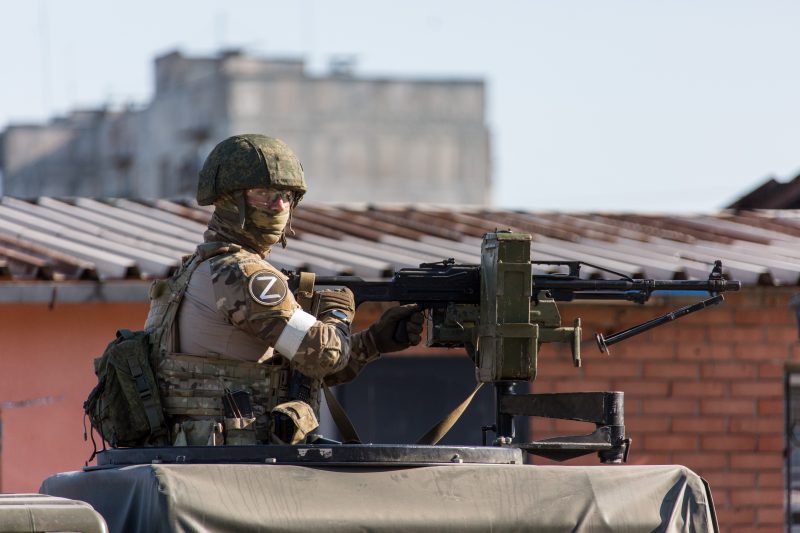
With the sanctions imposed on Russia, many Western brands stopped using the letters “Z” and “V” in their advertisements, while the demonstrations with these letters present, were completely banned in Germany.
Tulips of the wrecked city
We are leaving for Mariupol now. The leveled buildings, overturned trucks and vehicles stand out as we enter the city. It is just like a movie set and props, but sadly, everything is real. The sight you see there, pictures those conflicts as it is happening right in front of you. When we get off the bus and go to the schoolyard where humanitarian aid is distributed, you see all traces of the conflict, shattered glass and the remains of burned homes on the ground.
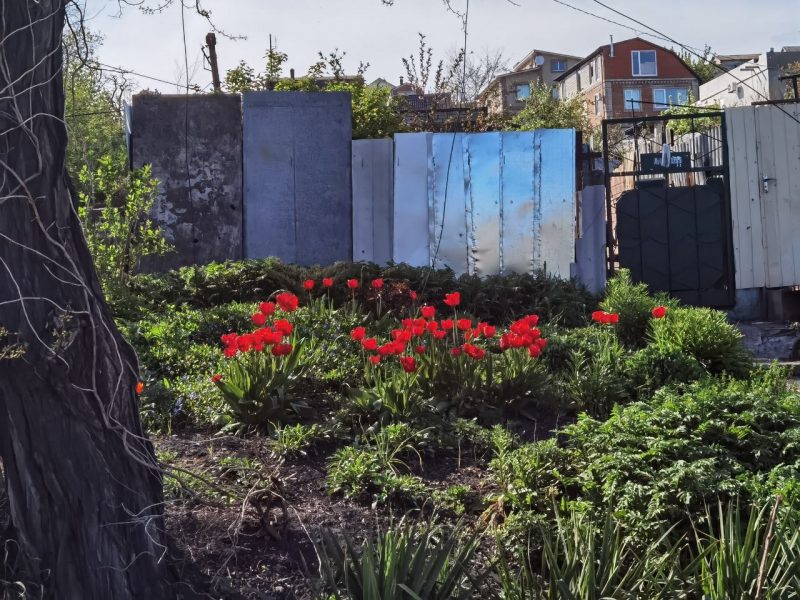
Tulips are the only thing that changes this picture. Wild tulips are found everywhere, like garden weeds. From the gardens of houses, to the grass patches on the roadsides… Colonel A. realises that I have noticed the tulips and said “Of course not as much as in Istanbul”. In fact, it is not possible to see such wild tulips in Istanbul. But I still confirm him and say “Of course, it spread around the world from Istanbul”.
To be continued…







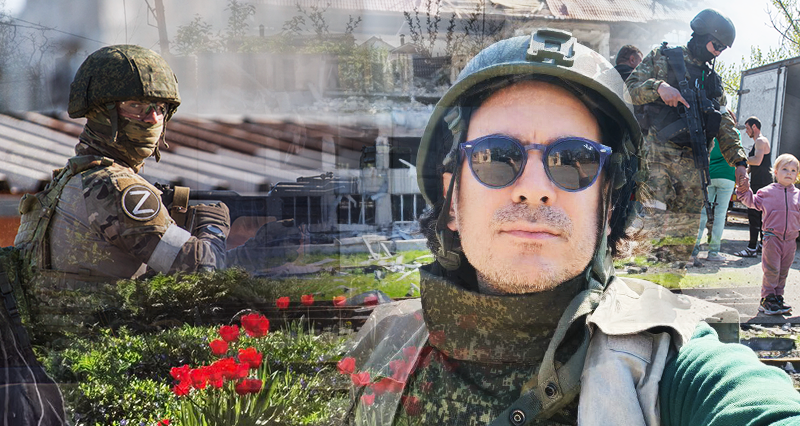









Leave a Reply